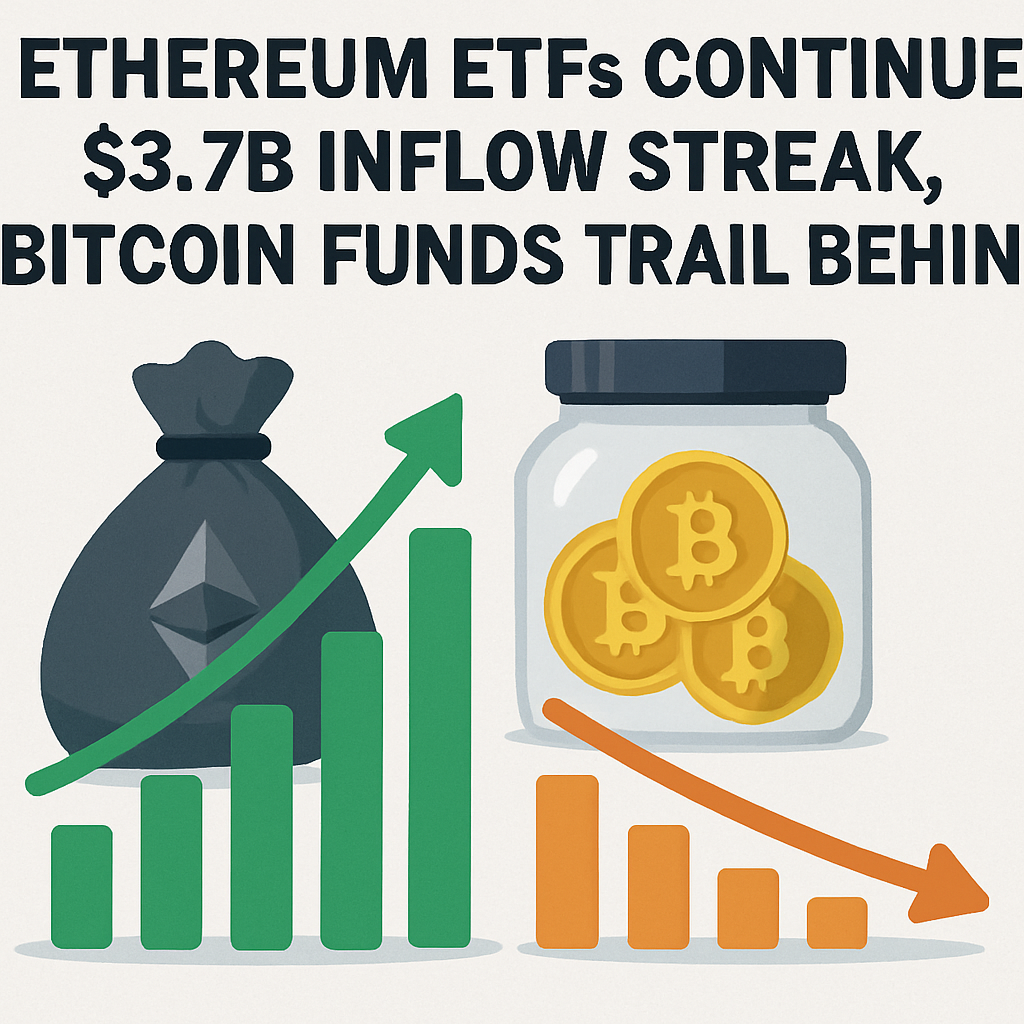On August 15, 2025, U.S. spot exchange-traded funds (ETFs) linked to Ethereum continued to attract significant capital, registering $639.61 million in net inflows for the trading day. The eight-day inflow streak has cumulated approximately $3.7 billion since the beginning of August, reinforcing institutional interest in ether exposure through regulated vehicles.
BlackRock’s iShares Ethereum Trust emerged as the primary beneficiary, accounting for roughly $2.6 billion of total assets under management. The ETF’s liquidity and market depth have facilitated large-scale allocations by asset managers seeking price appreciation and staking exposure. Secondary providers also reported steady inflows, contributing to the overall momentum.
In contrast, U.S. spot Bitcoin ETFs recorded $230.93 million in net inflows on August 14, marking the seventh consecutive day of positive capital movements totaling $1.34 billion. Bitcoin-linked funds maintain a larger asset base of $153.43 billion, representing approximately 6.54% of Bitcoin’s market capitalization. Ethereum ETFs currently hold $29.22 billion, equivalent to 5.34% of ether’s circulating market value.
Market participants have attributed the sustained ETF inflows to growing allocation mandates by pension funds and sovereign wealth entities. The clear regulatory framework for spot crypto products has reduced counterparty risk and encouraged diversified digital-asset portfolios. Analysts project that further approvals for altcoin-focused ETFs could broaden institutional participation.
Price performance data indicate that ether traded near record highs, briefly testing the $4,650 threshold following ETF inflows and positive network metrics. Total value locked in staking protocols and decentralized finance applications has also risen, supporting on-chain fundamentals.
The ongoing inflow pattern highlights a structural shift in digital-asset investment strategies. ETF flows now constitute a material component of on-chain demand dynamics, with implications for liquidity, volatility and derivative pricing. Observers recommend close monitoring of redemption patterns and secondary market spreads as indicators of broader market sentiment.
Future catalysts may include additional product launches, regulatory clarifications and macroeconomic factors influencing risk asset allocations. The long-term trajectory of ETF market share remains subject to evolving regulatory landscapes and institutional risk appetites.

Comments (0)